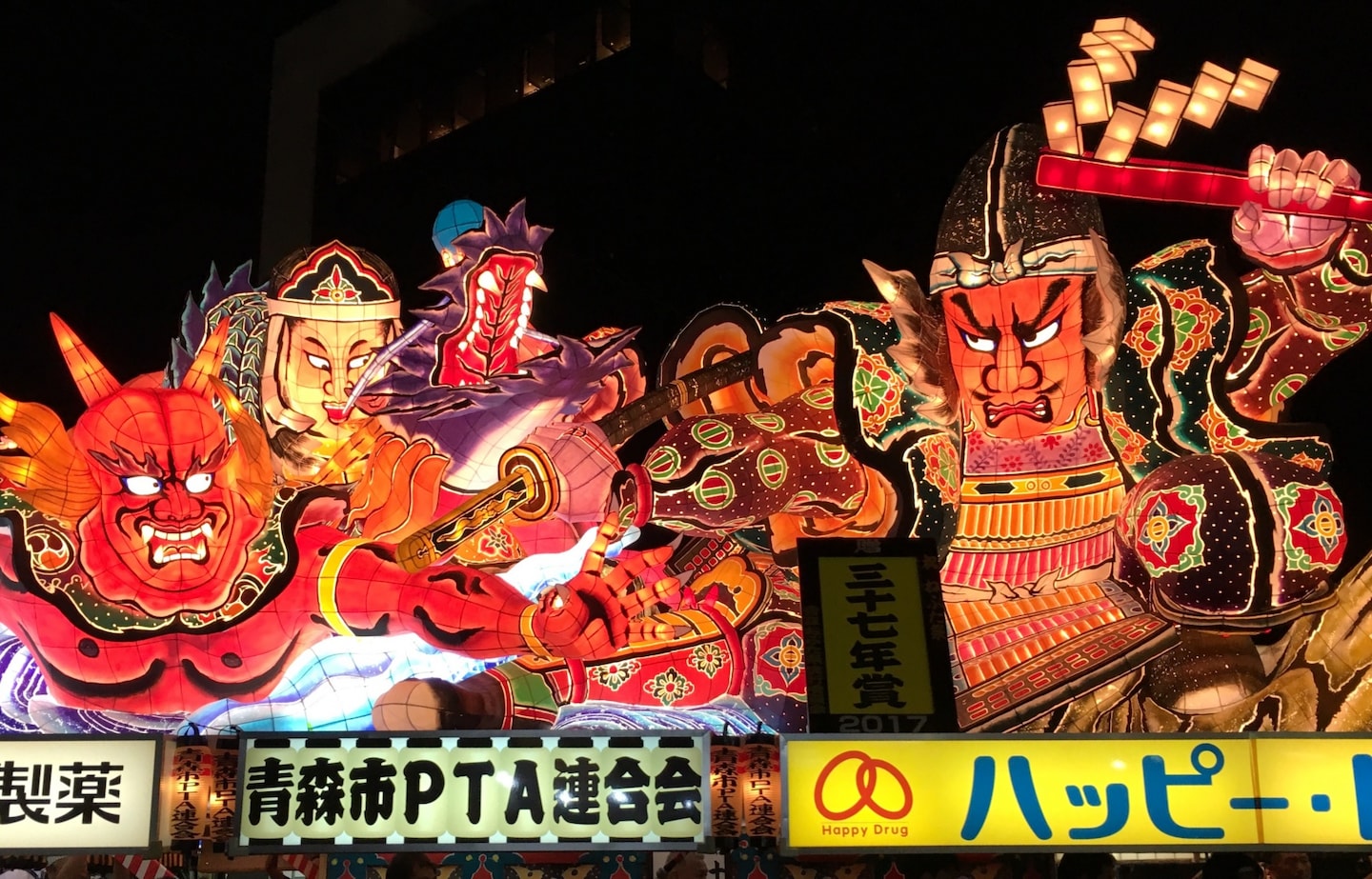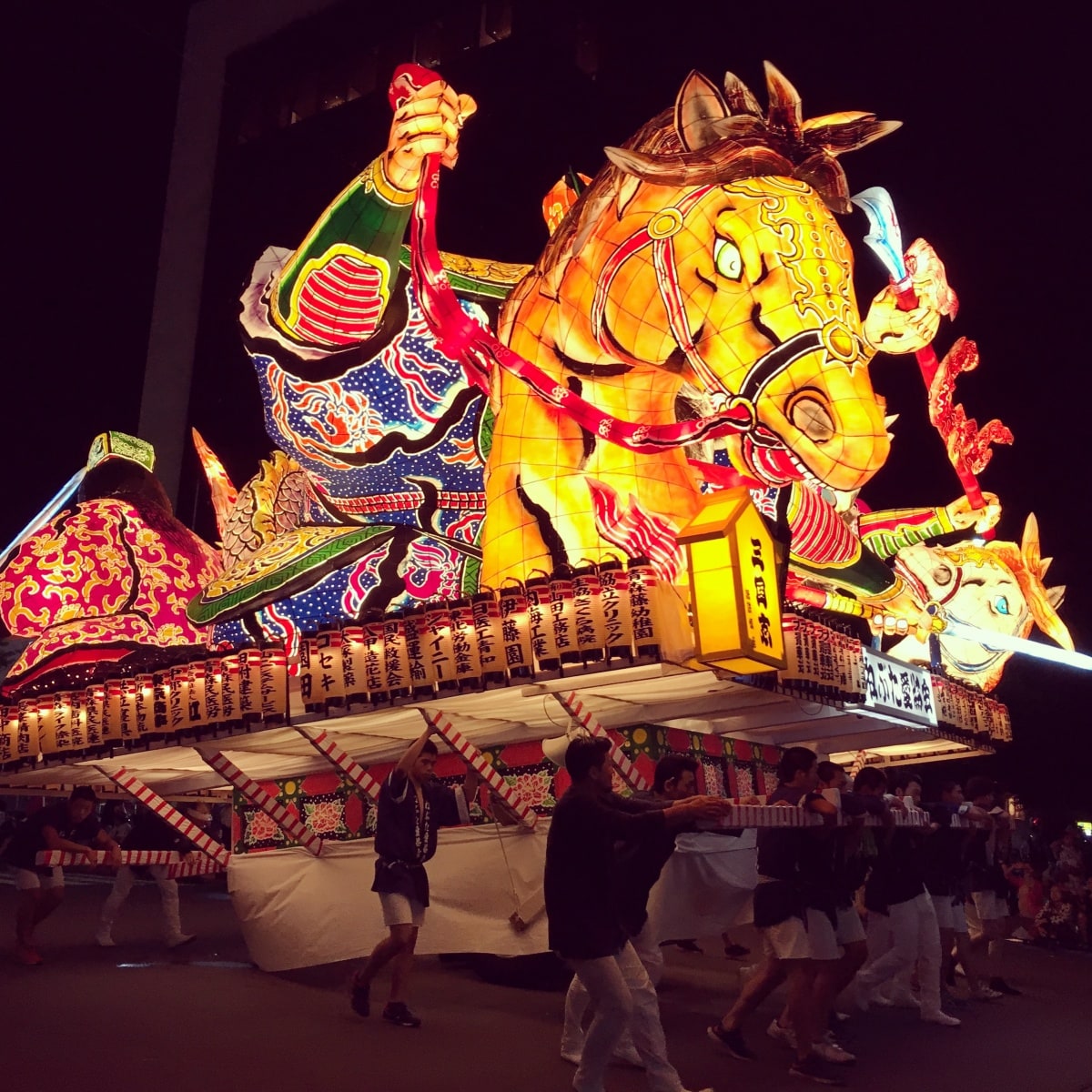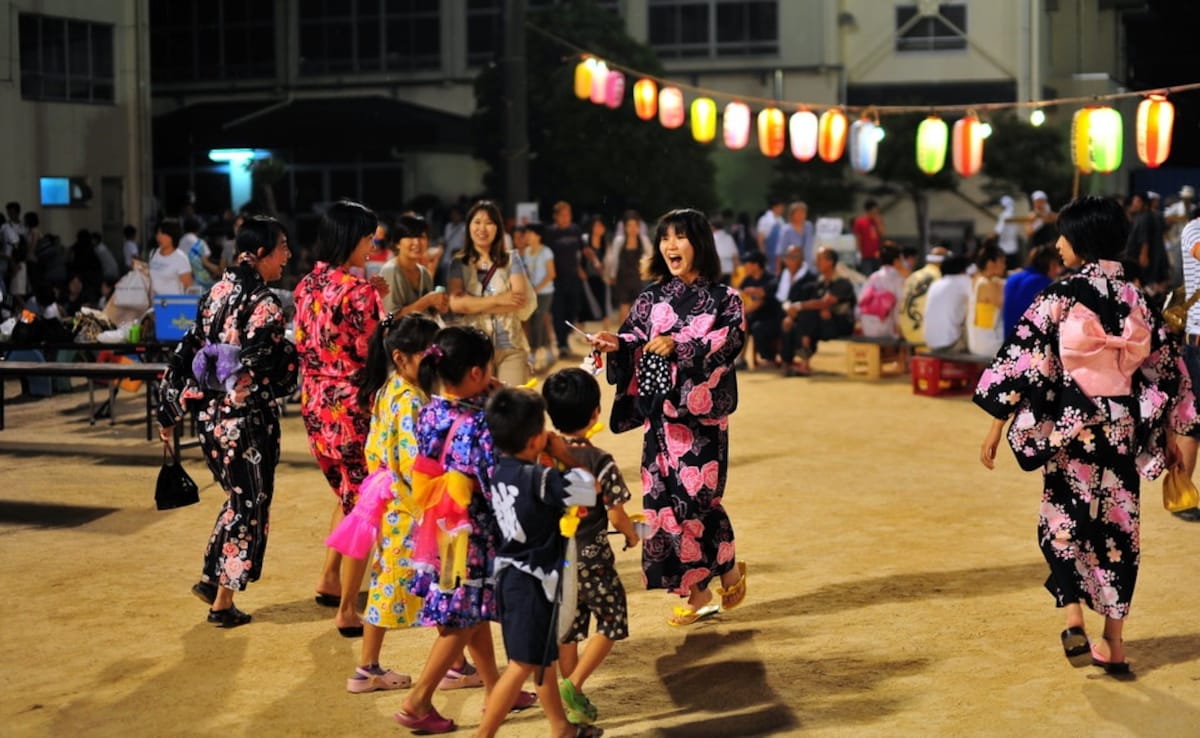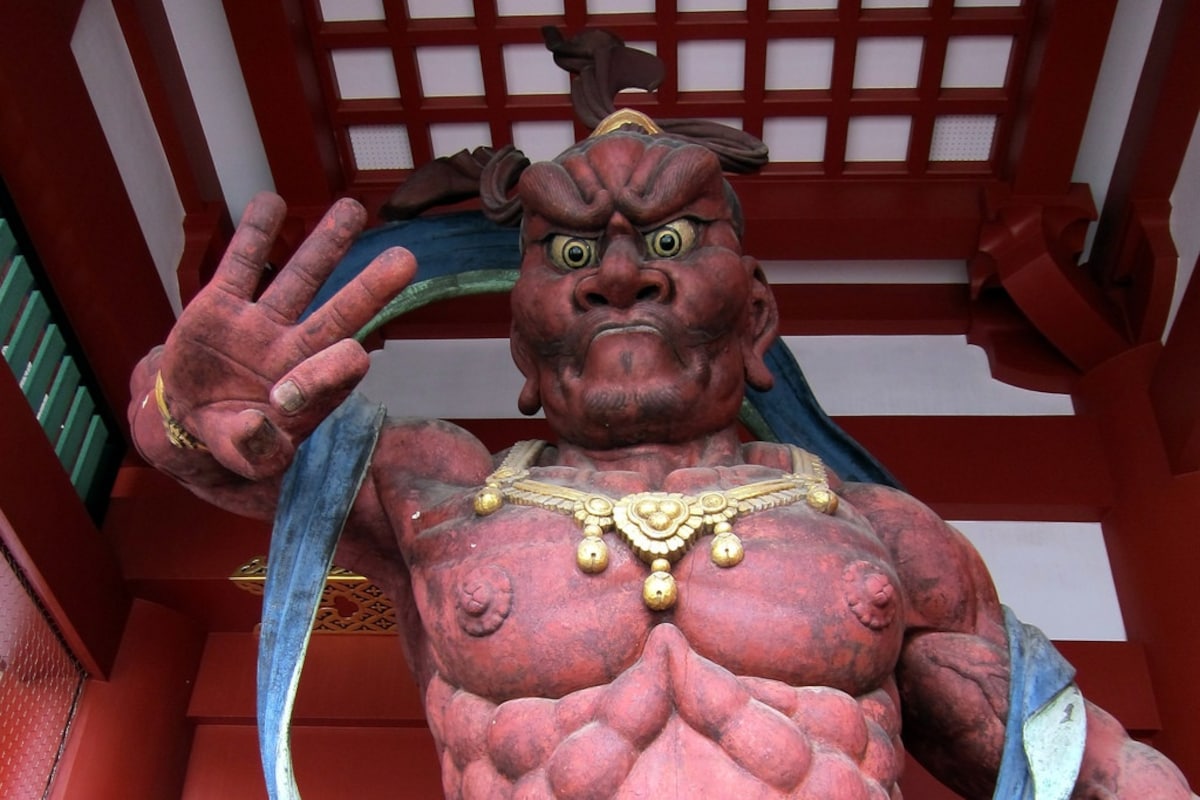Japan vs. China — Preserving Traditional Roots

Festivals (matsuri) in Japan can get extremely crowded, which might discourage people to attend. However, the festivals encourage communities to get together and celebrate their heritage, rituals, and traditions. Perhaps this is the reason why Japan seems to preserve their traditional roots better than their Chinese counterparts.
By Sky XuShared Roots, Lost Traditions

China and Japan share many similar cultural roots and traditions. The Tanabata or Star Festival in Japan actually originates from a Chinese legend of star-crossed lovers. The Dragon Boat Festival in China is also similar to the Tango Festival in Japan. It is unfortunate that these traditions are fading away in China.
Festivals in China, though rare, have also become opportunities for corruption to thrive. Some traditional festivals are centered around food, and eating on special occasions have become somewhat a pastime. Yet, this has become the prime opportunity for people to bribe officials by hiding money inside food packaging. The corruption has taken away the core concept of communal celebration and activities for the purpose of the festivals.
It is now unfortunately rare to find parades or community gatherings in China, though very common in Japan despite the shared tradition roots.
Political Climate

https://flic.kr/p/pcff4d
One of the factors that contribute towards the difference in preserving traditional roots is politics. During the Cultural Revolution (1966-1976), traditional and spiritual practices were heavily destroyed in China. Large gatherings in public spaces are also discouraged in fear of arising trouble unless they are either the National Day parades or other military parades on important occasions. However, even these large gatherings organized by the government restrict the general public to watching it on their televisions, leaving only the top leaders of the country being allowed to attend. However, Japan in contrast still encourages large public gatherings, allowing the public to continually celebrate traditional festivals in their communities.
Urbanization of China

https://flic.kr/p/anuP3r
Scholars have suggested that as China is a large country, there are many differences between provinces and villages within the country. Some have also observed that localized culture within each village is strong, and if a village were to be destroyed, the culture goes with it.
The past three decades have seen rapid urbanization across China which has led to destroying smaller villages as a result. Due to the hope and potential these large cities promote, those living in existing villages have also moved in large numbers to the cities to look for better prospects. Those who move into the cities are not usually warmly welcomed into the cities, with discrimination for the "migrant workers" becoming a prominent issue within the cities. The localized cultures die when the villages are destroyed or when people leave their land for the larger cities. The cultures are then not incorporated into the bigger cities due to ongoing discrimination. This leads to the lack of preservation of the traditional roots we see today in modern China.
Community Spirit

https://flic.kr/p/8pxeze
The discrimination of "migrant workers" in urban China means that those individuals are never truly integrated into their new communities. Though the government in recent years have made conscious efforts to revive the culture and traditions of China, the lack of communal spirit within those living in large cities has led to difficulties in sustaining rituals and keeping the traditions alive.
In contrast, the strong sense of community in Japan certainly keeps the traditions in the country alive. For instance, the events are usually organized by local neighborhood committees, tourism bureaus, or chambers of commerce. Many companies or associations even send their own team of performers to some of the festivals to perform, and rehearsals start months ahead of time. It is their chance to show appreciation to others and to appeal to the community.
For the locals, on the other hand, attending a matsuri is more than going to see a show. Those attending still feel part of the event because the chances are that somebody they know – their friends, their neighbors, or their kids—are participating in the parade. Local residents start taking up spaces along the sidewalks early in the morning just to get a good view of the parade at night. They wait by the sidewalk with their cameras and every time a familiar face passes by, they would call out their names, wave enthusiastically, and take pictures. The performer would momentarily break away from “acting mode” and smile back.
Similar to China, Japan has also gone through rapid urbanization and it happened much earlier than in China. However, this has not destroyed the sense of community that is prevalent in Japan. The ubiquitous Shinto shrines and the administrative efforts to manage communities in an organized fashion have also probably helped preserve the local rituals and traditions despite urbanization. There is also a conscious effort to search through Japanese history for authentic cultural roots in the face of rapid modernization. The combination of historical Japan with its modern society has led to some of the current festivals having only started half a century ago. They also draw big crowds of tourists, which is good for the local economy.
What is very clear is that the community spirit that is prominent in Japan has clearly led to the preservation of the historical roots to the present day.
Japanese Matsuri
This summer, I had the opportunity of seeing several festivals in the Tohoku region. Not only has it been a fascinating close encounter with Japanese culture, it also gave me a chance to reflect upon why traditions meet with different fates in Japan and China.
For foreign tourists, the sheer scale of Japanese festivals is impressive. Thousands of people of all ages march down the street in traditional clothing, dancing and chanting to the Japanese drums (taiko). For many Japanese people, however, festivals carry a deeper meaning. “Without festivals, it wouldn’t feel like summer,” was repeated to me one more than one occasion.
Most matsuris in Japan are related to Shintoism. It is said that the gods are carried out of the neighborhood shrines on special occasions and paraded down the street for people to worship and celebrate. Not all matsuris have strong religious or spiritual atmospheres, but often times they are sources of entertainment more than anything else. Nonetheless, it is the stories and legends behind the festivals that fascinate me the most.
Myths & Legends

https://flic.kr/p/9M5EGV
The Sansa Odori festival in Iwate originates from the legend that a long time ago, a devil was causing trouble to the local villages. As people prayed to the gods, their prayers were answered and the devil made a promise to stop causing trouble. As a symbol of the promise made, the devil left his palm print on a giant rock. This has led to naming the prefecture Iwate, which literally means hand on a rock. The local residents danced around the rock in joy, which has led to the Sansa Odori dance festival today. A young woman who has participated in the dance for eight years told me that everybody in the area learns about the legend growing up.
Some rituals have also become a form of folk art that’s passed down from generation to generation, and that’s how tradition is kept alive. During the Kanto Matsuri in the Akita prefecture, lanterns (kanto) are tied onto a cross structure made out of bamboo. The largest kanto is 12 meters tall, consists of 46 lanterns, and weighs around 50kg. During the festival, the local residents who participate attempt to bear the weight of the kanto on their foreheads, shoulders, or even on their hips which is no easy feat! Though many failed, all persevered and it was inspiring to see even young children performing in the festival, keeping local traditions alive for future generations.
However, some festivals have uncertain origins. Both the Kanto Matsuri in Akita and the Nebuta Matsuri in Aomori is based around harvesting rice, but they are also said to be a ritual performed to clear away evil spirits and midsummer illnesses.
The Nebuta and the Kanto Festivals are incredibly similar to the Lantern Festival in mainland China which falls on the 15th day of January on the Lunar calendar. It marks the final day of the Chinese New Year celebrations. People admire the beautifully decorated paper lanterns and take a guess at the lantern riddles on that day. Such activities are rarely organized today and the atmosphere is not the same as the festive parades in Japan.



